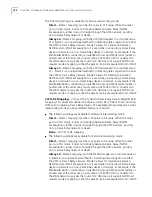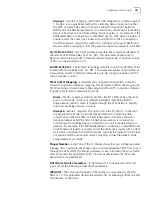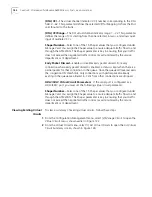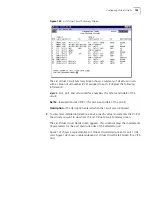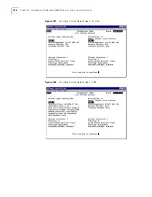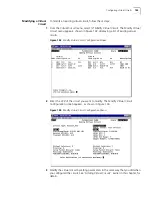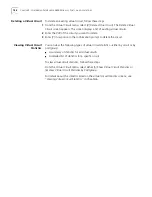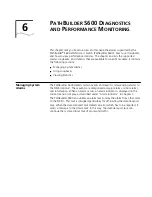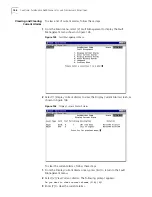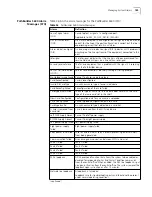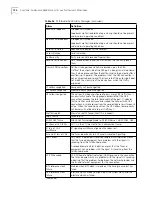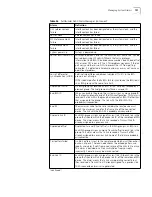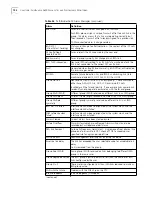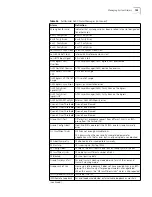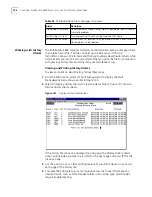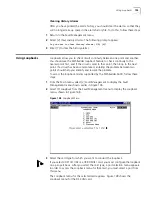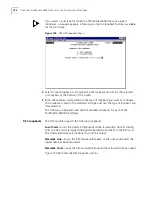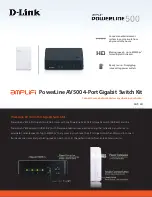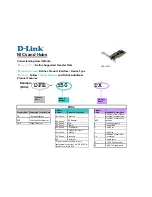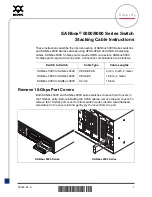
Configuring Virtual Circuits
181
Always-1
—Mode 2 mapping, with the DE field mapped to a constant value of
1. Mode 2 is an operational method for indicating data congestion to either
the ATM or Frame Relay network. Mode 2 allows for translation between
NLPID and LLC-SNAP encapsulation. It is used when connecting a Frame Relay
device or network to a non-Frame Relay device or network. For example, if the
PathBuilder S600 is connecting a router/FRAD over an ATM network (public or
private) and at the other site a router with an ATM OC3 UNI is connected to
the WAN network, typically the router OC3 UNI does not support NLPID and
requires mode 2 mapping so that the packet can be encapsulated to LLC-SNAP.
Start FR-SSCS DLCI
—The starting Frame Relay data link connection identifier of
the remote ATM Frame Relay host:
16...991
. This parameter applies only to
Network interworking model. In Network interworking mode, contiguous values
of SSCS can be mapped to a VCI.
End FR-SSCS DLCI
—The ending Frame Relay data link connection identifier of the
remote ATM Frame Relay host:
16...991
. This parameter applies only to Network
interworking model. In Network interworking mode, contiguous values of SSCS
can be mapped to a VCI.
FECN to EFCI Mapping
—Forward Explicit Congestion Notification to Explicit
Forward Congestion Indication mapping. This parameter defines the mapping of
FECN incoming on Frame Relay to the outgoing ATM cell PTI congestion indicator.
It applies only to Service interworking mode.
Direct
—Mode 1 mapping; matches FECN to the PTI CN bit. When the serial
port is in this mode, it does not translate between Frame Relay (NLPID)
encapsulation, rather it sends it straight through the ATM network, possibly
onto a Frame Relay network or device.
Always-0
—Mode 2 mapping. This option sets the EFCI field to ‘congestion
not experienced.’ Mode 2 is an operational method for indicating data
congestion to either the ATM or Frame Relay network. Mode 2 allows for
translation between NLPID and LLC-SNAP encapsulation. It is used when
connecting a Frame Relay device or network to a non-Frame Relay device or
network. For example, if the PathBuilder S600 is connecting a router/FRAD over
an ATM network (public or private) and at the other site a router with an ATM
OC3 UNI is connected to the WAN network, typically the router OC3 UNI does
not support NLPID and requires mode 2 mapping so that the packet can be
encapsulated to LLC-SNAP.
Shaper Number
—Select one of the 15 Shaper values that you configured under
Manage Card
. You assign the
Shaper
value to ensure adequate traffic flow to and
through the ATM WAN. The
Shaper
parameter is key in ensuring that your traffic
does not exceed the negotiated traffic contract as administered by the service
department or IS department.
DXI Virtual Circuit Parameters
If the serial port is configured as a DXI port,
you must set the following virtual circuit parameters:
(DFA) VPI
—The virtual path indicator (VPI) number corresponding to the DFA
field:
0...15
. This parameter defines the selected VPI for Mapping to/from the Port
card (Router) to the trunk.
Summary of Contents for 3C63100-AC-C - PathBuilder S600...
Page 8: ...INDEX 3COM CORPORATION LIMITED WARRANTY ...
Page 14: ...xiv CHAPTER SUPPLEMENTARY REGULATORY INFORMATION ...
Page 18: ...18 ABOUT THIS GUIDE ...
Page 28: ...28 CHAPTER 1 SYSTEM DESCRIPTION ...
Page 74: ...74 CHAPTER 3 GETTING STARTED ...
Page 230: ...230 INDEX ...














